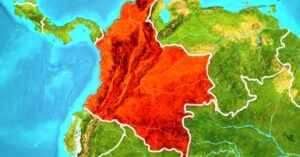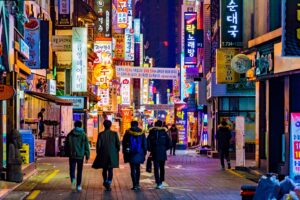5 June 2018
By Tom Garmeson, Features correspondent
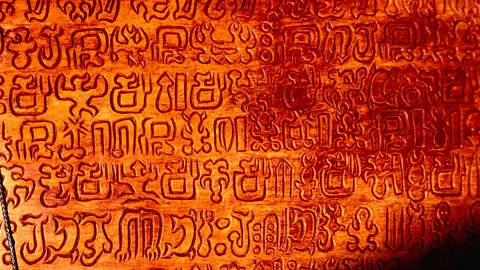 James Lyon/Getty
James Lyon/GettyEaster Island’s dramatic history is echoed in the local Rapa Nui tongue. Today, the language is severely endangered, but determined islanders refuse to let it disappear.
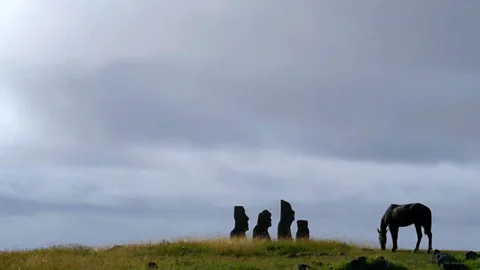 Tom Garmeson
Tom GarmesonLanguage is like a living being, it is always changing,” said Rapa Nui linguist Viki Haoa Cardinali.
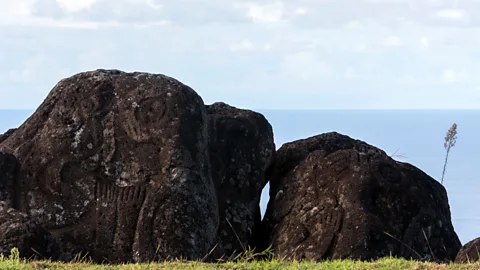 Tom Garmeson
Tom GarmesonOver centuries, Polynesian explorers braved the Pacific Ocean in search of new worlds. By 1200 AD, settlers had reached Easter Island, also known as Rapa Nui, bringing crops, customs and language with them. The stunning isolation of the island, which is more than 3,600km west of the South American mainland, has long captured the imagination of archaeologists, academics and artists.
Clues to the complex society that emerged on Rapa Nui can be found everywhere; the island’s volcanic landscape boasts one of the richest collections of rock art in Polynesia. But barely a trace remains of what is Rapa Nui’s most tantalising cultural legacy: a mysterious form of writing called Rongorongo.
 James Lyon/Getty
James Lyon/GettyThe Rongorongo script is perhaps Easter Island’s greatest enigma. No-one is sure about how or when it was invented, and only about two dozen texts are known to exist in the world, none of which remain on the island. Most take the form of small wooden tablets, whose intricate glyphs were carved using shark teeth or shards of obsidian. The symbols themselves tend to represent the various flora and fauna of the island, including migratory birds, fish and anthropomorphic figures. Experts believe the texts likely had some sort of sacred purpose, though the meaning itself remains shrouded in mystery.
When it comes to Rongorongo, there are far more questions than answers, but the island’s oral history tells of schools that were created to train young boys to write and interpret the texts. Scribes employed an unusual writing system called reverse boustrophedon, which required the reader to begin at the bottom left-hand corner and flip the tablet upside down at the end of each line.
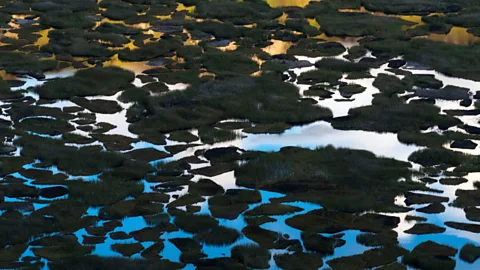 Tom Garmeson
Tom GarmesonFormed less than a million years ago, Easter Island is one of the youngest inhabited regions in the world. Spanning just 163 sq km, the island is only around three times the size of Manhattan, and boasts undulating hills and several dormant volcanos. In the absence of any permanent rivers or streams, shimmering lagoons at the bottom of the three largest craters provided settlers with a much-needed source of fresh water.
When the first people arrived on the island, they would have been met by dense forests fed by the volcanic soil, but by the time Europeans first arrived in the 18th Century, the vast majority of the island had been reduced to grassland. Academics still argue over the role that locals played in the deforestation, but, according to NPR, recent years have seen several experts move away from the theory that over-exploitation of the island’s resources was the sole cause. Some even claim that stowaway Polynesian rats were the culprits, breeding uncontrollably before laying waste to the giant palm trees which covered the island.
Whatever the cause, the scarce wood that remained had become a prized asset, and islanders had resorted to creating ingenious rock gardens that captured rainwater in order grow their food.
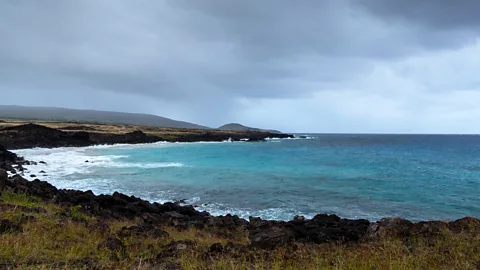 Tom Garmeson
Tom GarmesonThe first presence of Europeans came on Easter Sunday 1722, when Dutch explorer Jacob Roggeveen chanced upon the island. His stay was brief, but countless incursions by outsiders over the next two centuries would have a devastating impact on the Rapa Nui people.
In the 1860s, slavers from Peru brought around 1,000 islanders to the mainland. The few who made it back to the island brought smallpox with them, decimating the population. Many of those who survived the epidemic fled to Tahiti, leaving barely more than 100 Rapa Nui in 1888, when the island was annexed by Chile. Many of the Rongorongo tablets were lost or destroyed during this period, along with the only people who knew how to read them.
The language itself was vastly altered by the waves of foreign influence, with Tahitian, French, Spanish and English creeping into the lexicon. Rapa Nui historian Cristián Moreno Pakarati says that as a result, there’s little chance that we’ll ever be able to decode the surviving Rongorongo texts.
“The Rapa Nui that is spoken today is very different. It’s a language that has mutated and metamorphosed because of everything that happened here. The old language from before 1860 is what is reflected in the tablets – If we tried to use a dictionary of modern Rapa Nui to match it to the symbols, it wouldn’t work”, Pakarati said.
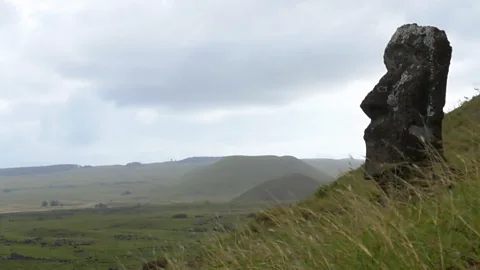 Tom Garmeson
Tom GarmesonThe impact was an enormous loss of knowledge. It’s as if out of the seven billion people alive in the world today, only one million were left. How much knowledge would we lose?” Pakarati said.
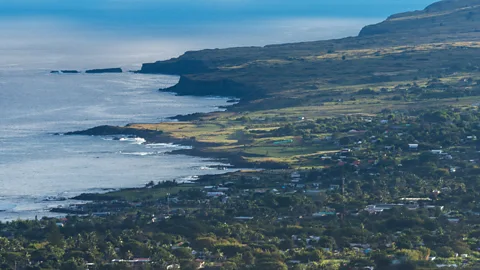 Tom Garmeson
Tom GarmesonBefore the Chilean Air Force launched Radio Manukena in 1967, Easter Island was almost completely cut off from the outside world. Back then, the only means of communication was by word of mouth, and it could take weeks for news from the outside to reach Rapa Nui. The island’s mayor, Pedro Edmunds Paoa, remembers those times well. “There were no newspapers,” he said. “We didn’t know what was happening in the rest of the world until a month or two later… We lived in our own bubble.”
According to Easter Island-based journalist Jocelyn Fuentes, the fledgling Radio Manukena soon had people riveted. In the early days, very few islanders had radio receivers, so families would get together in each other’s homes to listen in. “When the radio station was launched, it was the only means of communication,” Edmunds Paoa recalled.
More than 50 years on, access to Chilean television channels and the internet have made it easier for islanders to connect with the outside world, but Radio Manukena remains a local favourite. Now in the hands of the island municipality, it still broadcasts every day from a tiny studio in Hanga Roa, Rapa Nui’s only town.
 Tom Garmeson
Tom GarmesonGreater connection with the outside world may have created more opportunities for islanders, but it has also taken its toll on the Rapa Nui language. In recent decades, more and more Chileans have moved to Easter Island, cementing Spanish as the predominant language for most of daily life. The growing cultural influence of Spanish, and the need for youngsters to travel to the mainland to access higher education, means many are growing up not speaking fluent Rapa Nui.
“These days, what lots of young people speak is really Rapañol [a combination of Rapa Nui and Spanish],” said Radio Manukena presenter Rafael Hereveri Pakarati.
Unesco has classified the Rapa Nui language as ‘severely endangered’, and a 2016 study found that while 70% of the island’s elders spoke the language fluently, that figure dropped to just 16.7% among Rapa Nui children between the ages of eight and 12. “My grandson speaks Rapa Nui,” Cardinali said. “But he tells me that at school he doesn’t have anyone to speak it with.”
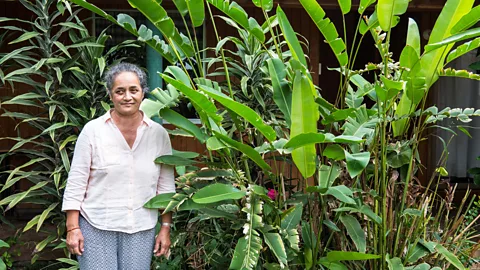 Tom Garmeson
Tom GarmesonCardinali is one of the best-known advocates of the Rapa Nui language, and has dedicated her career to safeguarding her mother tongue. Inspired by similar projects in New Zealand and Hawaii, in 2017 she started a nursery where children only speak Rapa Nui. Her dream is that someday the island will have a whole school taught entirely in Rapa Nui.
As a requirement for children to be admitted to the nursery, Cardinali asks that at least one parent speaks with their child only in Rapa Nui to ensure that learning carries on outside the classroom.
For Cardinali, it is vital that younger generations maintain an interest in the language. “The seeds that we’re planting at the nursery will become the future adults who are going to preserve the language,” she said.
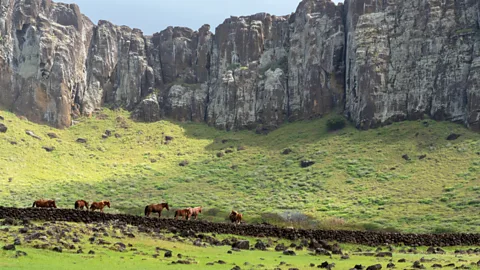 Tom Garmeson
Tom GarmesonTo speak our language is to preserve who we are. It is the most profound expression of our Rapa Nui and Polynesian spirit,” Cardinali said.
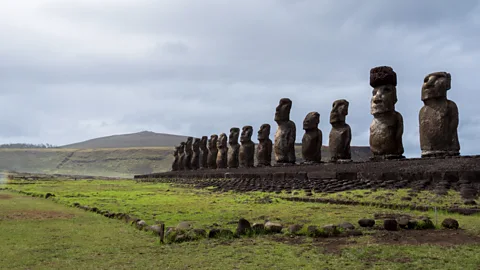 Tom Garmeson
Tom GarmesonThe island’s turbulent past continues to manifest itself through a complex and at times fractious relationship with Chile. However, the government does seem willing to give locals more autonomy. In 2017, control of the national park, which covers nearly half the island, was handed over to the Rapa Nui and the government created a massive marine protection zone around the island, where only locals are allowed to fish. But while preserving Rapa Nui’s delicate ecosystem has been the main focus of recent conservation efforts, elders say protecting the local culture is equally important.
There is surely no going back to the fabled isolation of the past, but as a new generation of islanders search for their place in today’s connected world, Edmunds Paoa is cautiously optimistic about the future.
“As long as society maintains a motivation and a passion for the culture in general, the language isn’t at risk. The language would be at risk if society lost interest in Rapa Nui culture. For the moment, I can still see that passion,” he said.

